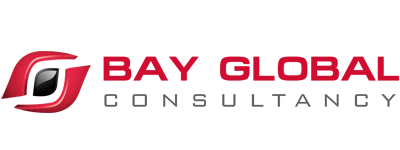Types of Organization Structure
Most organizations are designed, or evolve, to have elements of both hierarchy and more flexible, organic structures within. (Organic structures are more informal, less complex and more “ad-hoc” than hierarchical structures. They rely on people within the organization using their initiative to change the way they work as circumstances change.)
Before looking at some of the common types of organization structure, its worth looking at what characterizes a hierarchical structure and how it contrasts with an organic structure. It’s worth saying that one type of structure is not intrinsically better than another. Rather, it’s important to make sure that the organization design is fit for organization’s purpose and for the people within it. And the section on Making Organization Design Decisions below discusses this in more detail.
| CHARACTERISTIC | HIERARCHICAL STRUCTURE | ORGANIC STRUCTURE |
|---|---|---|
| Complexity | High – with lots of horizontal separation into functions, departments and divisions | Usually lower – less differentiation or functional separation |
| Formality | High – lots of well defined lines of control and responsibility | Lower – no real hierarchy and less formal division of responsibilities |
| Participation | Low – employees lower down the organization have little involvement with decision making | Higher participation – lower level employees have more influence on decision makers |
| Communication | Downward – information starts at the top and trickles down to employees | Lateral, upward, and downward communication – information flows through the organization with fewer barriers |
Functional structures and divisional structure are both examples of hierarchical organization structures.
In a functional structure, functions (accounting, marketing, HR etc) are quite separate; each led by a senior executive who reports to the CEO. The advantage can be efficiency and economies of scale where functional skills are paramount. The main disadvantage is that functional goals can end up overshadowing the overall goals of the organization.
In a divisional structure, the company is organized by office or customer location. Each division is autonomous and has a divisional manager who reports to the company CEO. Each business unit is typically structured along functional lines. The advantage here relates to local results, as each division is free to concentrate on its own performance. The disadvantage is that functions and effort may be duplicated. For example, each division may have a separate marketing function, and so risk being inefficient in its marketing efforts.
More organic structures include: simple, flat structures, matrix organizations and network structures:
Simple Structure – Often found in small businesses, the simple organization is structure is flat. It may have only two or three levels; employees tend to work as a large team with everyone reporting to one person. The advantages are efficiency and flexibility, and responsibilities are usually clear. The main disadvantage is that this structure can hold back growth when the company gets to a size where the founder or CEO cannot continue to make all the decisions.
Matrix Structure – In a matrix structure, people typically have two or more lines of report. For example, a matrix organization may combine both functional and divisional lines of responsibility. For example, in this structure, a marketing manager may report both to the functional marketing director and the country director of the division he or she works in. The advantage is that the organization focuses on divisional performance whilst also sharing functional specialist skills and resources. The (often serious) downfall is its complexity – effectively with two hierarchies, and with the added complexity of tensions between the two.
Network Structure – Often known as a lean structure, this type of organization has central, core functions that operate the strategic business. It outsources or subcontracts non-core functions which, depending on the type of business, could include manufacturing, distribution, information technology marketing and other functions. This structure is very flexible and often can adapt to the market almost immediately. The disadvantage is inevitable loss of control, dependence on third parties and the complexity of managing outsource and sub-contract suppliers.
Organizational structure is the skeleton of an organization. It is an expression of who is performing the various functions and tasks of a company and how these people relate to one another. Organizational structure encompasses a list of the various job positions, titles and duties of a business, and the reporting structure or chain of command among them.


